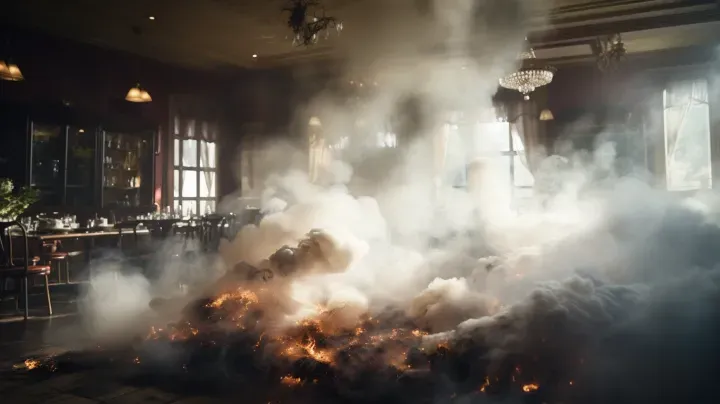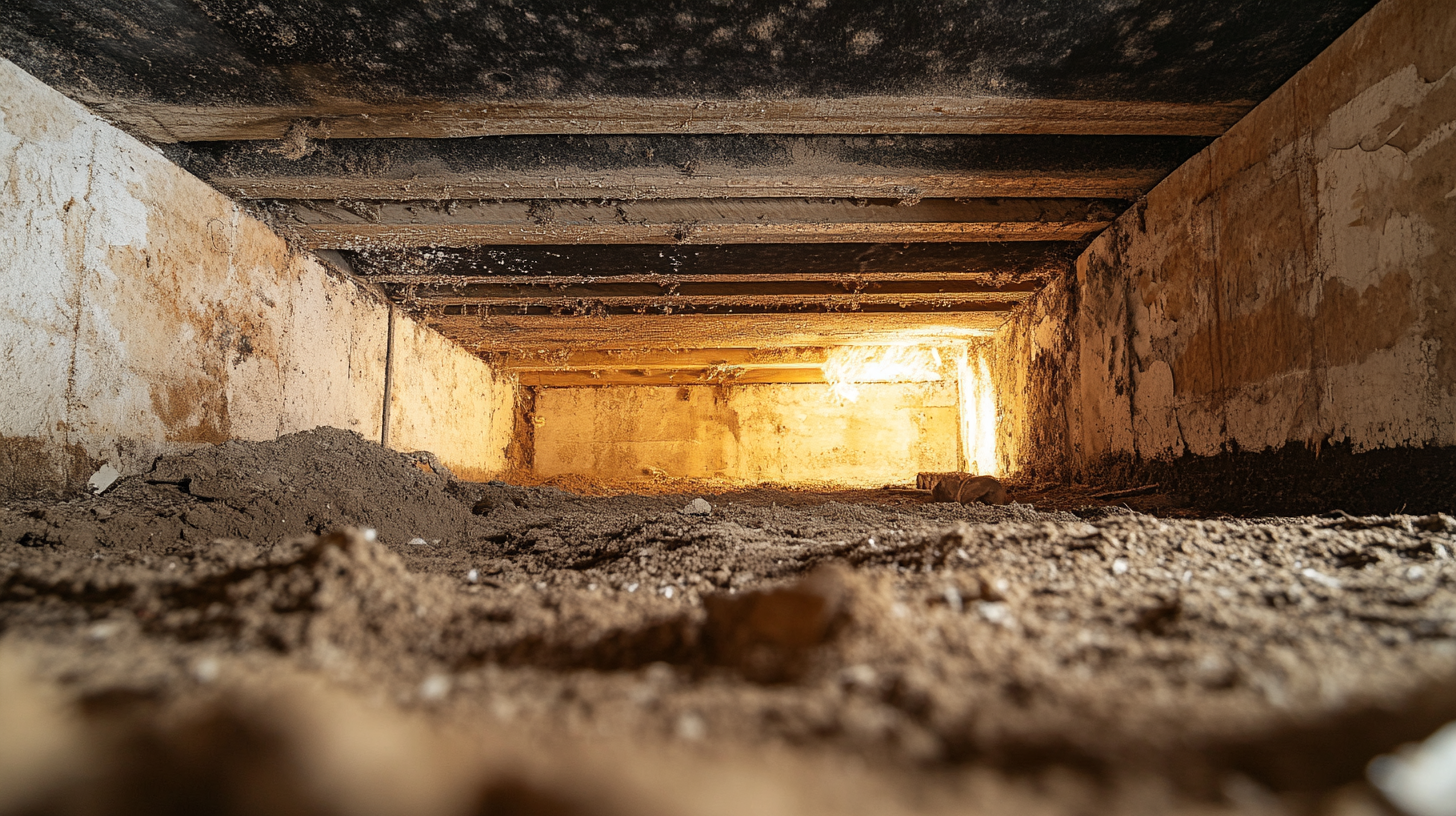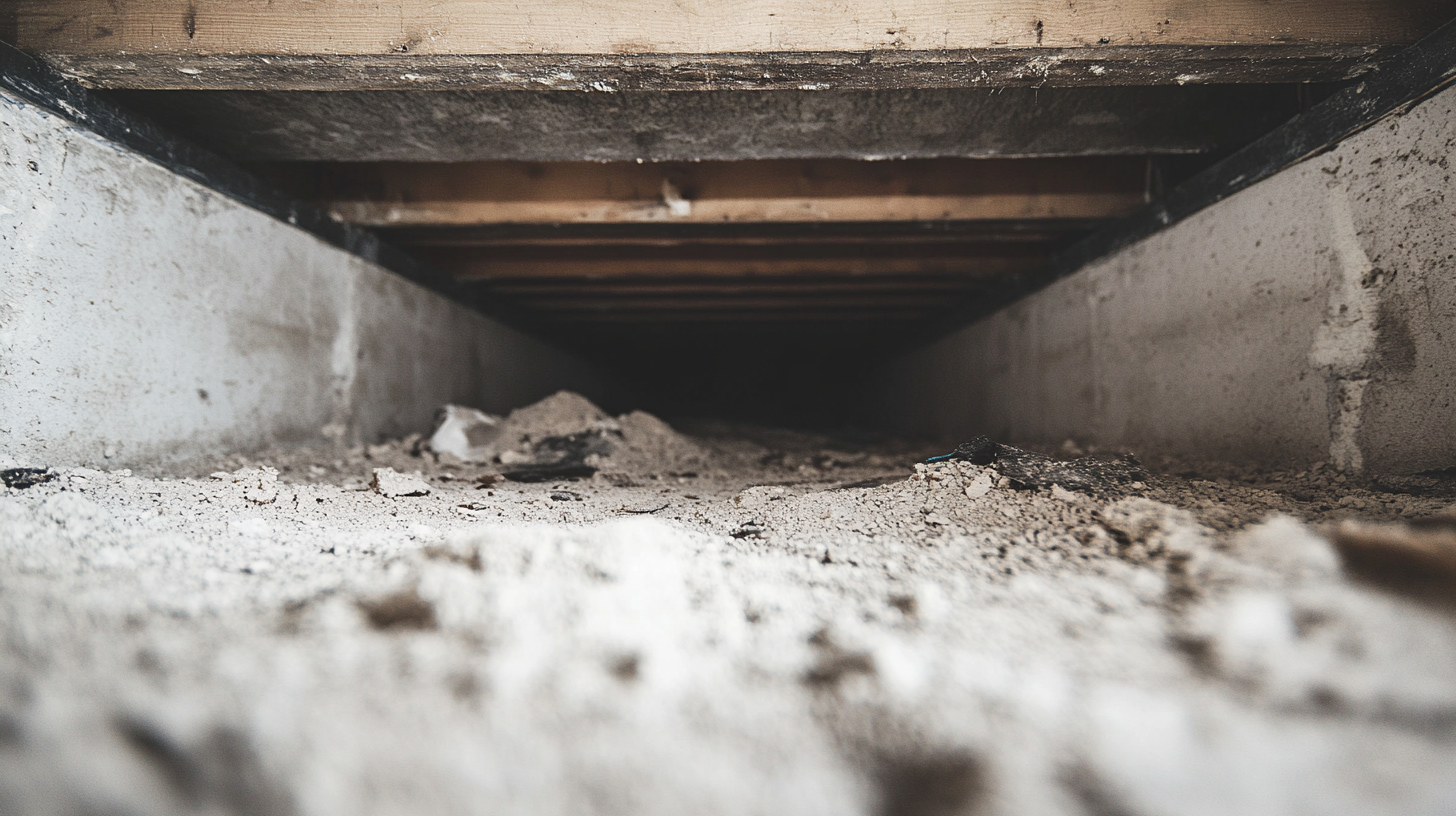Locally owned and operated.
Call Us Anytime: +1 843-304-6615
CLEANING & RESTORATION
24/7 Emergency Services:
Call us at 843-305-3383
Locally owned and operated.
Call Us Anytime: 843-305-3383
CLEANING & RESTORATION
24/7 Emergency Services:
Call us at 843-305-3383
Safety Precautions in Smoke Cleanup

Dealing with the aftermath of smoke damage is not just a matter of restoring aesthetics; it's a critical process enveloped in various safety considerations. This blog aims to underscore the importance of safety during smoke cleanup, shedding light on the potential risks and hazards involved. Smoke cleanup is more than just a cleaning task; it's a venture into an environment that may be fraught with hidden dangers, from toxic fumes to structural instabilities.
When a fire occurs, it leaves behind more than just charred remnants and soot; it creates a complex milieu of hazardous materials and conditions. Smoke, often containing a cocktail of harmful chemicals and particulates, can pose significant health risks. These risks are not limited to respiratory issues but can also include skin and eye irritations, among others. Moreover, the structural integrity of a smoke-damaged area can be compromised, posing physical risks.
Understanding these hazards is crucial for anyone involved in the cleanup process, whether a homeowner tackling the aftermath of a small fire or a professional restoration team handling extensive damage. This blog will delve into the various risks associated with smoke cleanup, from the inhalation of toxic particles to the handling of damaged structures. We will also provide essential guidelines and best practices to ensure safety, emphasizing the importance of protective gear, proper ventilation, and the need for professional assessment in certain scenarios.
Join us as we navigate the intricacies of safe smoke cleanup, equipping you with the knowledge to handle this challenging task with caution and care, ensuring your safety and well-being throughout the process.
Understanding the Risks of Smoke Cleanup
Smoke cleanup is a critical process that involves more than just restoring the appearance of a space; it encompasses dealing with various health and physical hazards. This section aims to educate on the toxic nature of smoke and soot and their health implications, as well as introduce the potential physical dangers encountered during smoke cleanup.
Health Hazards Associated with Smoke and Soot
Smoke and soot from fires can pose significant health risks due to their toxic nature. Here’s an overview of these hazards:
- Toxic Nature of Smoke and Soot: Smoke often contains a mix of harmful chemicals and particles released from burning materials. Common toxins include carbon monoxide, volatile organic compounds (VOCs), and other carcinogens.
- Respiratory Issues: Inhaling smoke and soot particles can lead to serious respiratory problems. This is particularly dangerous for individuals with pre-existing conditions like asthma or chronic bronchitis.
- Skin and Eye Irritation: Direct contact with soot can cause skin irritation, while smoke can lead to eye irritation, redness, and discomfort.
- Long-Term Health Implications: Prolonged exposure to smoke and soot can increase the risk of more severe health issues, including heart and lung diseases and certain types of cancer.
Potential Physical Dangers
In addition to health hazards, there are physical risks involved in smoke cleanup, including structural instability and electrical hazards:
- Structural Instability: Fires can compromise the structural integrity of buildings. During cleanup, it’s crucial to be aware of weakened floors, walls, and ceilings that could collapse.
- Electrical Hazards: There’s a risk of electrical hazards, especially if the fire has damaged wiring or electrical systems. Always ensure the electricity is turned off before beginning cleanup in affected areas.
- Slip and Fall Risks: Water used to extinguish fires can create slip hazards, and soot-covered surfaces can be slippery.
- Sharp Objects and Debris: Be cautious of sharp objects and debris hidden in the soot and rubble, which can cause injuries.
Understanding these risks is essential for anyone involved in smoke cleanup. It underscores the importance of taking appropriate safety measures, including wearing protective gear, ensuring proper ventilation, and considering professional assistance for extensive damage.
Personal Protective Equipment (PPE)
When undertaking smoke cleanup, personal safety is paramount. The use of appropriate Personal Protective Equipment (PPE) is essential to protect against the various hazards present in smoke-damaged environments. This section outlines the essential PPE for smoke cleanup and provides guidelines for their proper use and maintenance.
Essential PPE for Smoke Cleanup
Effective PPE forms a barrier against the harmful particles and substances found in smoke and soot. Here are the key items you should consider:
Respirators or Masks:
- Use an N95 respirator or a more advanced half-face respirator to filter out harmful particles in the air.
- Ensure the mask fits snugly and seals properly around your nose and mouth.
Gloves:
Wear durable gloves, preferably made of nitrile or latex, to protect your hands from soot, sharp objects, and other harmful materials.
Goggles:
Use protective goggles to shield your eyes from smoke particles, airborne debris, and irritants.
Protective Clothing:
- Wear long-sleeved shirts and long pants to cover your skin.
- Consider disposable overalls or coveralls for additional protection.
Proper Use and Maintenance of PPE
To ensure maximum protection, it’s crucial to use and maintain your PPE correctly. Here are some guidelines:
Correct Usage:
- Follow the manufacturer’s instructions for wearing and adjusting each piece of equipment.
- Ensure that PPE fits correctly and comfortably, as ill-fitting equipment can reduce its effectiveness.
Maintenance and Care:
- Regularly inspect your PPE for any signs of damage or wear. Replace any item that is damaged or no longer functional.
- Clean reusable PPE according to the manufacturer’s guidelines. For items like respirators, replace filters as recommended.
- Store PPE in a clean, dry place when not in use to maintain its condition.
Disposal of Disposable PPE:
- Safely dispose of single-use PPE like gloves and masks after use to prevent contamination.
- Follow local guidelines for the disposal of hazardous waste materials.
Using the right PPE and ensuring it is properly used and maintained can significantly reduce the risks associated with smoke cleanup. It’s an essential step in safeguarding your health and well-being during the restoration process.
Safe Cleaning Practices
Ensuring safety during cleaning, especially in environments affected by smoke or other pollutants, is crucial. This section focuses on ventilation and air quality control, as well as the safe handling of cleaning agents, providing you with effective strategies to maintain a safe and healthy cleaning environment.
Ventilation and Air Quality Control
Proper ventilation is key to maintaining a safe environment, especially when dealing with smoke or chemical fumes. Here are techniques to ensure adequate ventilation and improve air quality:
Techniques for Ensuring Adequate Ventilation:
- Open windows and doors to create a cross-flow of air, which helps in removing indoor pollutants.
- Use exhaust fans where available, especially in areas like kitchens and bathrooms, to help expel air pollutants outside.
- Consider the use of window fans to enhance air exchange if natural ventilation is insufficient.
Use of Air Purifiers and Filters to Improve Air Quality:
- Employ air purifiers with HEPA filters to capture fine particles, including smoke and dust, from the air.
- Regularly replace or clean the filters in your HVAC system to ensure efficient operation and removal of airborne contaminants.
- For larger spaces or areas with significant pollution, consider professional-grade air purifiers for more effective air cleaning.
Safe Handling of Cleaning Agents
Choosing the right cleaning products and using them safely is essential to avoid health risks. Here are recommendations and precautions:
Recommendations for Non-Toxic, Safe Cleaning Products:
- Opt for eco-friendly and non-toxic cleaning products, which are less likely to cause irritation or health issues.
- Consider using natural cleaning agents like vinegar, baking soda, and lemon juice, which are effective and safe for most surfaces.
Precautions When Using Chemical Cleaners:
- Always read and follow the instructions on the label of any cleaning product.
- Wear gloves and, if necessary, masks or goggles when using chemical cleaners to protect your skin and eyes from irritation.
- Ensure good ventilation when using strong or chemical-based cleaners to avoid inhaling fumes.
Store cleaning products safely, out of reach of children and pets, and never mix different chemicals, as this can create dangerous fumes.
Implementing these safe cleaning practices helps in maintaining a healthy environment while effectively cleaning and restoring spaces affected by smoke or other pollutants.
Electrical and Structural Safety
In the aftermath of smoke damage, it's crucial to address not just the visible effects but also the potential hidden dangers, particularly concerning electrical and structural safety. This section provides guidance on how to assess and manage electrical risks and identify structural weaknesses that could pose hazards.
Assessing and Managing Electrical Risks
Smoke damage can significantly impact electrical systems, posing serious risks. Here are steps to safely assess and handle these systems:
- Inspecting Electrical Systems: Before beginning any cleanup, inspect your electrical systems for visible signs of damage. Look for burnt wires, damaged outlets, or any signs of electrical malfunction.
- Turning Off Power: If you suspect any damage, turn off the power at the main breaker. This is a crucial step to prevent electrical shocks or fires.
- Professional Assessment: Have a licensed electrician inspect your electrical system. They can identify hidden damages and ensure that the system is safe to use.
- Avoiding DIY Repairs: Electrical repairs should not be a DIY task. Always rely on professionals to fix any issues to ensure safety and compliance with local codes.
Identifying Structural Weaknesses
Smoke and fire can compromise the structural integrity of a building. Here are tips for spotting and addressing potential structural hazards:
- Visual Inspection: Look for signs of structural damage such as cracks in walls or ceilings, sagging roofs or floors, and loose or falling debris.
- Checking for Water Damage: Water used in extinguishing a fire can weaken structural elements. Pay attention to any signs of water damage, especially in load-bearing areas.
- Seeking Professional Evaluation: Just like with electrical systems, a professional assessment is vital. Structural engineers or building inspectors can provide a thorough evaluation of the building's safety.
- Securing the Area: If you identify any potential hazards, restrict access to those areas until a professional can assess and address the issue.
Electrical and structural safety are paramount in the aftermath of smoke damage. Taking the right steps to assess and manage these risks is essential for ensuring the safety of everyone involved in the cleanup and restoration process.
Managing Smoke Odor Safely
Effectively managing smoke odor is a crucial aspect of the cleanup process after fire damage. It's important to approach this task safely, using methods that are effective yet pose no additional risks to health or the environment. This section covers natural methods for odor elimination and provides advice on the safe use of commercial odor neutralizers.
Natural Methods for Odor Elimination
Natural deodorizers can be surprisingly effective in neutralizing smoke odors without the risks associated with harsh chemicals. Here are some safe and eco-friendly options:
Utilizing Baking Soda, Vinegar, and Other Natural Deodorizers:
- Baking Soda: Sprinkle baking soda generously on smoke-affected surfaces like carpets and upholstery. Let it sit for several hours or overnight, then vacuum it up. Baking soda absorbs and neutralizes odors effectively.
- Vinegar: White vinegar is a natural deodorizer. Mix a solution of equal parts water and vinegar, and use it to lightly spray affected areas. The vinegar smell will dissipate, taking the smoke odor with it.
- Activated Charcoal: Place bowls of activated charcoal in rooms affected by smoke odor. Charcoal is highly adsorbent and can help remove odors from the air.
Avoiding the Use of Harmful Chemical Odor Maskers:
Avoid using products that merely mask odors with heavy fragrances, as they can contribute to indoor air pollution and may not effectively eliminate the underlying smoke odor.
Safe Use of Commercial Odor Neutralizers
While natural methods are effective for mild odors, more persistent smells may require commercial odor neutralizers. Here’s how to use them responsibly:
Advice on Selecting Commercial Odor Neutralizers:
- Choose products specifically designed to neutralize smoke odors. Look for non-toxic and environmentally friendly options when available.
- Read and understand the product labels. Opt for products with clear safety instructions and minimal hazardous ingredients.
Using Commercial Odor Neutralizers Responsibly:
- Always follow the manufacturer's instructions for use, ensuring proper application and ventilation.
- Wear gloves and masks if recommended, especially when using products in enclosed spaces.
- Test the product on a small, inconspicuous area first to ensure it does not damage or discolor the surface.
Store all chemical products safely, out of reach of children and pets.
By choosing the right methods and products for smoke odor elimination, you can effectively manage odors while prioritizing safety and health.
FAQs
-
Is PPE Necessary for Smoke Cleanup?
Yes, Personal Protective Equipment (PPE) like masks, gloves, and goggles is essential to protect against inhaling harmful particles and skin contact with toxic substances during smoke cleanup.
-
How to Ensure Safe Ventilation?
Ensure safe ventilation by opening windows and using fans to circulate fresh air. This helps to reduce the concentration of harmful particles and odors in the air.
-
Are Commercial Cleaners Safe to Use?
Commercial cleaners can be safe if used according to the manufacturer's instructions. Always ensure proper ventilation and wear protective gear when using these products.
-
Precautions for Electrical Safety Post-Fire?
For electrical safety, turn off power at the main breaker, avoid using damaged electrical appliances, and have an electrician inspect and approve the electrical system before use.
-
Handling Structural Damage Safely?
Address structural damage by first consulting with professionals like structural engineers. Avoid entering areas with visible damage or instability until they have been professionally assessed and deemed safe.
Contact Fast Response Cleaning & Restoration Today!
Fast Response Cleaning & Restoration will do everything we can to ensure your experience with us is excellent.
Request A FREE Estimate
Request A FREE Estimate Form
We will get back to you as soon as possible.
Please try again later.
CHECKOUT RECENT POST



Have an Emergency? We're Here to Help!
When it comes to disaster cleanup, we are a seasoned veteran in the industry and have helped hundreds of property owners just like you.
Our disaster recovery teams are available 24-7 to quickly clean up and repair disasters of all types.

We're looking forward to providing you with our outstanding services!
COMPANY INFO
ADDRESS: 307 Cold Creek Pass, Bluffton, SC, 29910, United States
EMAIL: office@fastresponsecr.com
PHONE: 843-305-3383
OFFICE: 843-304-6615
HOURS
SUNDAY: Open 24 Hours
MONDAY: Open 24 Hours
TUESDAY: Open 24 Hours
WEDNESDAY: Open 24 Hours
THURSDAY: Open 24 Hours
FRIDAY: Open 24 Hours
SATURDAY: Open 24 Hours
Copyright © 2021 Fast Response Cleaning & Restoration
Fast Response Cleaning and Restoration FL | Sitemap | Privacy Policy